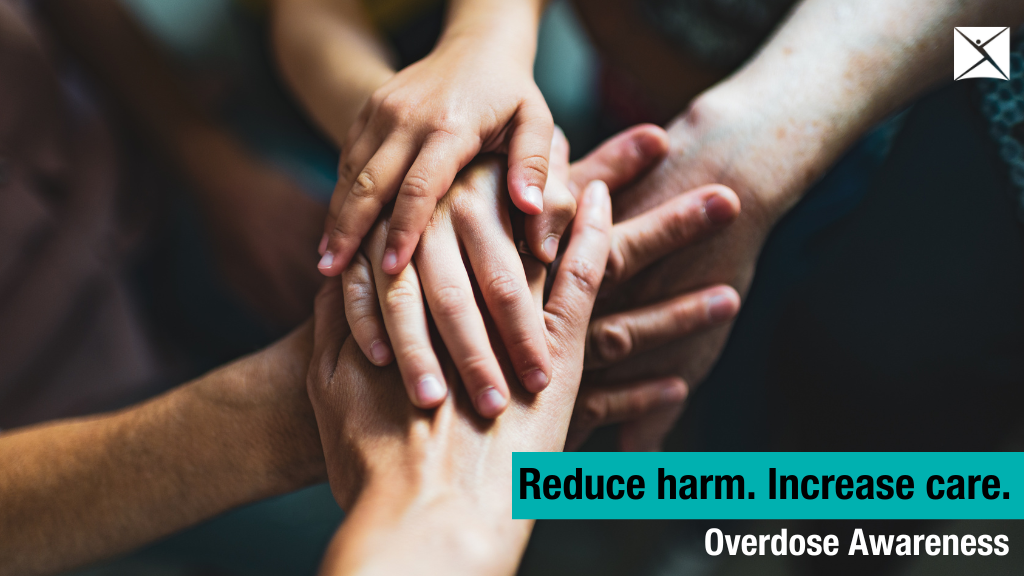Menu
Close

Preventing drug-related deaths
Aug 20, 2024
Last year, 8,049 people in Canada died from apparent drug poisonings – an average of 22 deaths per day. These deaths were largely accidental, meaning those using drugs did not want to die.
We are living in an unprecedented time of drug-related harms. And yet, in a recent poll commissioned by the Canadian Mental Health Association Ontario Division, one in four Canadians said that “People who overdose on opioids get what they deserve,” signalling profound misunderstandings about the nature of the toxic drug supply and about the complexities of drug use and addiction.
We can prevent drug-related deaths. This year’s theme for International Overdose Awareness Day, “Together we can,” highlights that it takes community-wide support to reduce the harms associated with drugs. To do so, we need to stop trying to ban drugs. We need to stop demeaning and criminalizing people who use drugs. And we need to do everything we can to reduce the harms of using drugs.
Here’s how we do that
Beyond “us” and “them”: De-stigmatizing substance use and supporting safety and wellness
People use substances for all sorts of reasons – for relaxation and pleasure, to cope with life’s challenges, and to manage physical pain or trauma. Most of us consume substances of some kind – caffeine, alcohol, tobacco, cannabis, prescription medications or psychotropic drugs. Using substances is part of the human experience and has been for centuries. While many of us do not experience significant harms from using substances, some may experience problems, such as addiction or dependence, hospitalization or even death.
The introduction of substances like fentanyl, carfentanil, benzodiazepines and xylazine, to the unregulated (illegal) drug supply means that the risks associated with using an unregulated substance are much higher. Whether someone is taking an unregulated drug for the first time, or does so recreationally on the weekends, or uses it daily, there is a risk of drug poisoning.
That’s why it’s more accurate to say that the drug supply in Canada is “toxic” rather than talking about the “overdose crisis.” A person doesn’t necessarily “overdose” or become unresponsive because of the amount or type of drug they used. A single grain of fentanyl or carfentanil can be lethal.
In whatever ways you use substances, it’s important to know the risks and consume as safely as you can. This involves awareness-raising campaigns and education about the risks, particularly for young people, alongside strong regulations related to the marketing, packaging and distribution of legal substances. To address the toxic drug supply, we must invest in harm reduction, safer supply, and advocate for decriminalization. To learn more, read the Canadian Drug Policy Coalition’s report on Canadian drug policy.
Reducing the Risk
We can all reduce the risk when using substances: Get informed. Never use drugs by yourself. Visit a harm reduction site. Get naloxone, an antidote for opioid poisoning. Start low and go slow. Get your drugs checked. Advocate for decriminalization. Stay connected. Talk to someone. Ask for help. Offer help. Listen. Respond. Learn more about naloxone on the Government of Canada’s website.
Decriminalization
Decriminalization alone will not end the drug poisoning crisis in Canada, but it is an essential step. The criminalization of people who use drugs occurs through punitive drug laws, prohibition and policing, which all shape public attitudes about drugs and the people who use them. While the arrests for simple possession have purportedly been on the decline in Canada, drug use continues to be criminalized through police presence near sites where people use drugs and through sanctions on how and where people can use drugs. When drugs are criminalized, a line is drawn between people who are seen as “legitimate” and deserving of care and concern and those who are seen as illegitimate, undeserving, and stigmatized. Research from around the world also shows that the criminalization of drugs does not reduce drug use; rather, people who use drugs face considerable stigma by health care providers and are subsequently less likely to access to medical treatment and harm reduction services. Decriminalization is about safety and dignity.
Harm reduction and safer supply
Harm reduction is an evidence-based, client-centred approach that seeks to reduce the health and social harms associated with addiction and substance use, without necessarily requiring people who use substances from abstaining or stopping. It allows people who use drugs to have increased control over their lives and their health and to protect themselves, their families and their communities. Harm reduction includes supervised consumption services, the distribution of supplies, such as sterile injection and inhalation equipment, drug checking, safer supply programs, which provide prescribed medications to some people who use drugs, and policies like decriminalization.
It’s important that harm reduction services keep pace with the changes in the needs of people who use drugs. In Canada, that means having more harm reduction sites with the infrastructure to allow people to inhale drugs, as increasingly, the majority of deaths from toxic poisonings in Canada occur by smoking. Currently, harm reduction services are centered on the needs of those who consume drugs nasally, orally or through injection.
Healthcare and social supports
In some cases, the use of substances can become problematic, and the underlying reasons may be linked to trauma, psychological or physical pain. Part of ensuring the health and wellness of people who use drugs, requires access to a full spectrum of mental health and addiction supports alongside harm reduction services should people want to access them. In Canada, mental health and addiction supports are not adequately funded, as those looking for access might discover long wait times or have to pay out of pocket to be able to get them. Read our recent open letter to the Minister of Health, calling for substance use health and addiction services to be fully covered within our public universal health care system.
